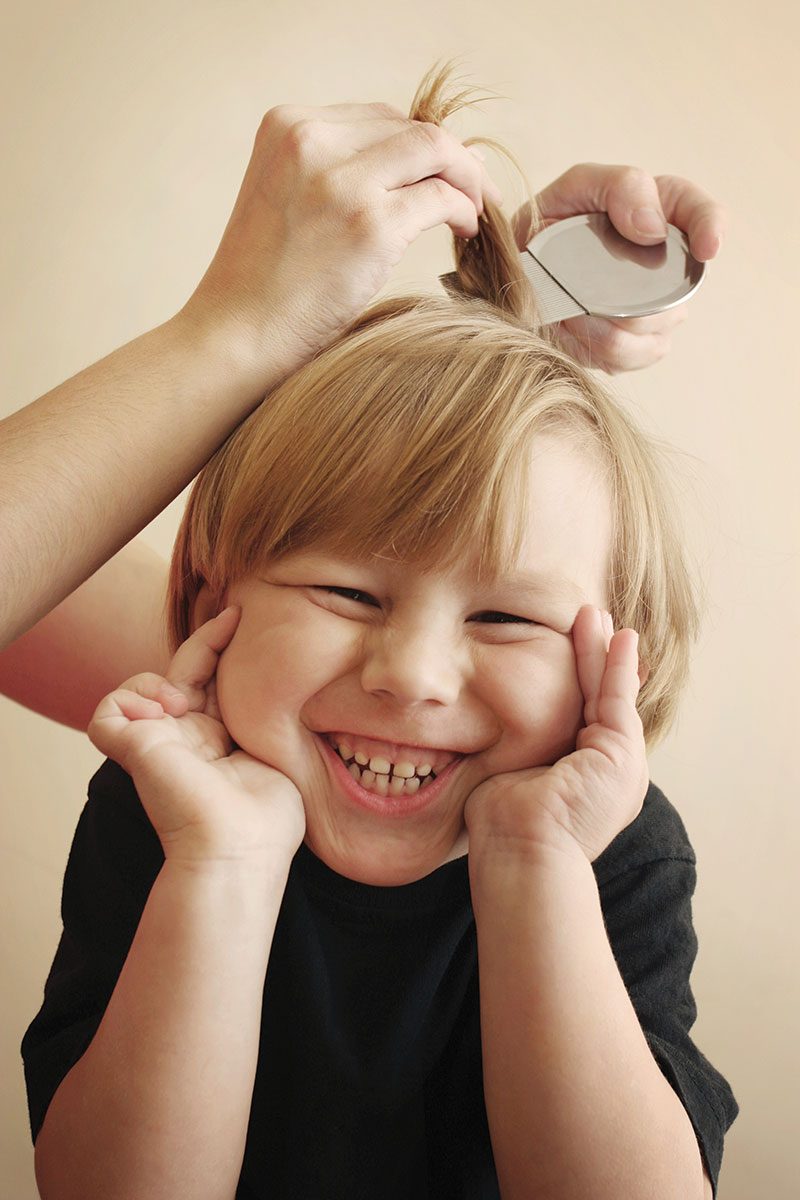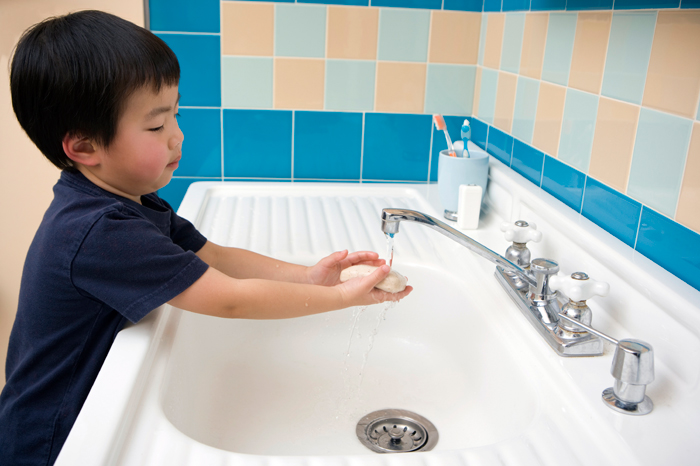 You know the myth: Kiss a frog and you’ll get a wart. It’s definitely not true, but that doesn’t help take the “ewww” factor away from warts — or any other common but embarrassing childhood ailment. From warts and athlete’s foot to pinworms and lice, we’re taking the taboo out of the gross but common childhood ailments you’re likely to experience in your household at some point or another. Trust us, it’s icky, but you can deal!
You know the myth: Kiss a frog and you’ll get a wart. It’s definitely not true, but that doesn’t help take the “ewww” factor away from warts — or any other common but embarrassing childhood ailment. From warts and athlete’s foot to pinworms and lice, we’re taking the taboo out of the gross but common childhood ailments you’re likely to experience in your household at some point or another. Trust us, it’s icky, but you can deal!1. Pinworms
The word “worm” is enough to make anyone squirm. But loosen up: Pinworms are actually the most common type of intestinal worm infection in the U.S. “Pinworms are nothing to be afraid of,” says Dr. Cora Breuner of Seattle Children’s Hospital.
“People who have pinworms are not dirty,” she says, making an important point that applies to many of these ailments. Pinworms are actual worms, thin and white and measuring from about one-quarter to one-half inch in length. Your child can get pinworms simply by touching something that’s contaminated with pinworm eggs — anything from furniture or counters to towels or clothes — and then bringing his or her hands to the mouth. That’s how pinworm eggs get into the body. Then they hatch, grow, move through the intestines and then lay eggs around the anus, Breuner says. You might spot the worms at nighttime if you examine the area (our sympathies, truly).
“They don’t cause any harm (just itching!),” Breuner says, “and it won’t take long to get rid of them.” If you suspect your child might have pinworms — perhaps by complaints of anus itching at nighttime or a lot of squirming — take them to the doctor. Treatment consists of medicine given twice over the course of two weeks, plus anti-itch cream.
2. Warts
 We really shouldn’t feel ashamed of warts.
We really shouldn’t feel ashamed of warts.
“Our hatred of warts is a learned behavior and is reinforced culturally through old wives’ tales [if you kiss a frog, you will get a wart], fairy tales [wicked witch with the big wart on her nose] and society,” says Morgan Maier, a physician’s assistant in dermatology at Seattle Children’s Hospital. “You never see media images where someone has a wart on their lip or hands; it is always perfect, smooth skin.”
But in fact, most people will end up with warts at some point in their lives, and as many as one-third of all primary schoolchildren have them, says Dr. Agnes Wong at Swedish Children’s Clinic in Edmonds.
While there really are no reliable ways to prevent them, it’s a good idea to not share towels if someone in your household has warts. If you see a wart on your child, you don’t necessarily have to do anything, Maier says, adding that treatments take a long time, and some can be painful. A doctor can help you make that decision.
Oh, and be careful how you talk about it.
“I encourage parents to not focus too much on their children’s warts, and encourage positive talk,” Maier says. “Remember that you are teaching your child how to react. If you say, ‘Oh, it is just a wart, it will go away,’ they will take that as truth and are more likely to accept them.”
3. Athlete’s foot
The same goes with athlete’s foot, a contagious fungal infection often associated with feet having been sweaty and enclosed in tight-fighting shoes.
“I would encourage parents to not be too harsh with their kids when it comes to these types of infections,” Maier says. “They are not dangerous and more of a nuisance than anything.”
Still, along the same lines as not sharing towels if you have warts, if your child has athlete’s foot, then you’ll want to take similar precautions with sharing footwear to help prevent the spread.
In addition to treating athlete’s foot with antifungal cream, let shoes air-dry for 24 hours, wear breathable cotton socks, wear flip-flops on shared surfaces such as at the pool, and avoid sharing shoes or grooming instruments such as clippers or pumice stones, Maier says.
4. Head lice
 If the thought of head lice makes you shiver (or feel suddenly itchy), you’re not alone.
If the thought of head lice makes you shiver (or feel suddenly itchy), you’re not alone.
“Head lice certainly cause a lot of anxiety among children and parents, but they are not dangerous — nor are they a sign of poor hygiene,” says Dr. Elizabeth Meade, a pediatric hospitalist at Swedish.
In fact, millions of school-age children in the U.S. get head lice each year, according to the American Academy of Pediatrics’ HealthyChildren website.
If you suspect lice, have the doctor, school nurse or lice specialist confirm it before you start treatment, and talk to them about what kind of treatment to use (there are over-the-counter products as well as “salons,” such as Lice Knowing You, where, for a price, professionals can deal with your child’s head and yours). And make sure you know your school’s policy: The American Academy of Pediatrics discourages “no-nit” policies that keep children out of school.
5. Vaginitis, etc.
Vaginal irritation or itching — often caused by “nonspecific vulvovaginitis” — is common in prepubertal girls and can be brought on or aggravated by anything from poor hygiene or toilet paper in the vagina to irritating soaps to clothing that doesn’t allow air to circulate, Meade says. And girls can be embarrassed to bring it up. Here’s where you come in.
 “Both boys and girls should be encouraged from a young age to tell parents about any change in their bodies that they notice or have questions about,” Meade says. Also, if parents notice something, “it’s OK to explain what you see and to ask your child in a calm and comfortable way whether they have noticed anything different,” she says. Don’t act grossed out or make it seem like something abnormal. A doctor can provide treatment and prevention options.
“Both boys and girls should be encouraged from a young age to tell parents about any change in their bodies that they notice or have questions about,” Meade says. Also, if parents notice something, “it’s OK to explain what you see and to ask your child in a calm and comfortable way whether they have noticed anything different,” she says. Don’t act grossed out or make it seem like something abnormal. A doctor can provide treatment and prevention options.
The bottom line: Kids end up with a lot of ailments, many of which can be embarrassing. But knowing how to talk about it with your children — and remembering that your doctor has seen it all — is a wise approach.
Get grossed out behind closed doors if you must, but then put on your calmest mommy or daddy face. You’ve got this!
“Kids learn by example, so the more we can show them that their bodies should not be a source of embarrassment, and that parents and doctors are safe people to talk about anything with, the more we encourage them to have a healthy image of themselves and ask for help when they need it!” Meade says.











